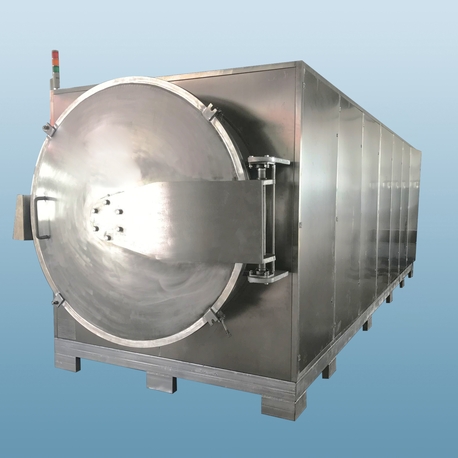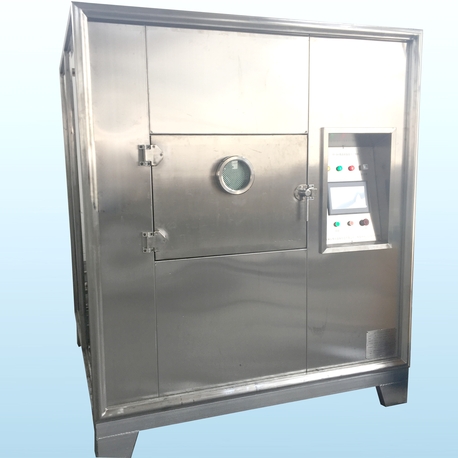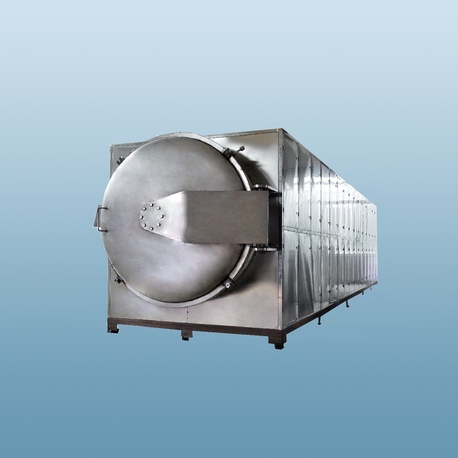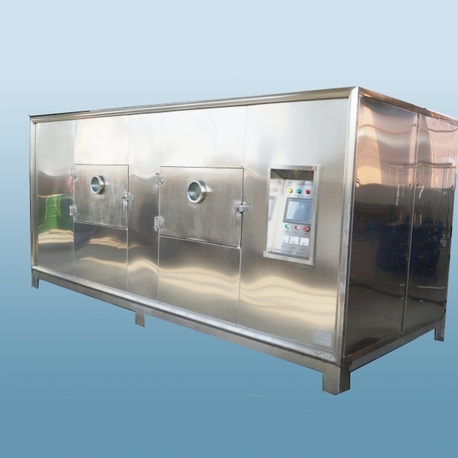If you're processing heat-sensitive materials, removing solvents, or drying complex components, you've likely hit the limitations of conventional hot air ovens. The solution, increasingly adopted across advanced manufacturing sectors, is the industrial vacuum drying oven. This isn't just a minor upgrade; it's a fundamentally different technology that solves some of the most persistent challenges in industrial drying. By removing air and pressure from the equation, these systems offer unparalleled control and quality for delicate processes. This article breaks down the five core advantages of this technology, explores how it works in a real-world setting, and highlights the industries that rely on it. We'll also look at how manufacturers like Nasan are engineering these ovens to meet specific industrial challenges.

What is an Industrial Vacuum Drying Oven?
At its heart, an industrial vacuum drying oven is a sealed chamber that uses a vacuum pump to remove air and significantly lower the pressure inside. This creates a controlled environment where moisture and solvents can be removed at much lower temperatures than in atmospheric ovens.
The principle is simple but powerful: by lowering the boiling point of liquids, drying can occur rapidly and completely without subjecting the product to damaging high heat. A standard industrial vacuum drying oven is built with a robust, pressure-rated chamber (often stainless steel), a heating system, a vacuum pump, and precise controls for temperature and pressure. This setup is a world away from a simple heated cabinet, representing a sophisticated piece of process engineering.
5 Key Advantages of Using a Vacuum Drying Oven
Why are industries shifting to this technology? The benefits are both performance and bottom-line oriented.
1. Superior Product Quality for Heat-Sensitive Materials
This is the single biggest reason for choosing a vacuum drying oven. Many products—from certain pharmaceuticals and delicate chemicals to electronic components—degrade, oxidize, or lose potency at high temperatures. Vacuum drying preserves the intrinsic properties of the material. It prevents case-hardening, a phenomenon where the outside of a product crusts over, trapping moisture inside. The result is a more thoroughly and evenly dried product with minimal thermal stress.
2. Dramatically Increased Energy Efficiency
While creating a vacuum requires energy, the overall process is often more efficient. Because water and solvents evaporate at lower temperatures, the vacuum drying oven consumes far less thermal energy to achieve the same drying effect. The absence of large volumes of hot air being constantly circulated and exhausted, as in a convection oven, translates directly into lower operating costs. This makes a vacuum drying process not only gentler but also more economical over time.
3. Faster Drying Times for Many Applications
It might seem counterintuitive, but lowering the temperature can speed things up. In a vacuum, moisture is pulled from the product more aggressively. The reduced pressure allows internal moisture to migrate to the surface and vaporize more readily. For porous or thick materials, this can significantly shorten the overall cycle time compared to waiting for heat to slowly penetrate and moisture to slowly diffuse out in a standard oven.
4. Enhanced Safety for Solvent Removal
In many chemical and pharmaceutical processes, removing flammable solvents is a major safety hazard. A standard oven circulating hot air can create an explosive atmosphere. A vacuum drying oven mitigates this risk entirely. By removing the oxygen, it creates an inert environment where combustion cannot occur. This makes it the only safe choice for industrial drying of materials containing volatile organic compounds (VOCs) or other flammable substances.
5. Prevention of Oxidation and Contamination
The vacuum environment is not only moisture-free but also largely oxygen-free. This is critical for applications where oxidation would ruin the product, such as in the production of certain metal powders or specialty chemicals. Furthermore, because no outside air is introduced during the cycle, there is no risk of airborne contaminants settling on the product. This is essential for maintaining purity in pharmaceutical and food-related drying solutions.
Inside the Process: How a Vacuum Drying Oven Operates
The operation of a vacuum drying oven is a carefully controlled sequence:
Loading: The product is placed on trays inside the chamber.
Sealing: The door is closed and sealed securely.
Vacuum Draw-Down: The vacuum pump is activated, evacuating air from the chamber until the desired pressure setpoint is reached.
Heating and Drying: With the vacuum maintained, controlled heat is applied. The product dries from the inside out as moisture vaporizes at the low pressure.
Condensation (Optional): In a closed-loop system, the vaporized solvents are directed to a condenser, where they are recovered as liquids for disposal or reuse.
Venting and Unloading: Once the cycle is complete, the vacuum is slowly broken by introducing dry, inert gas (like Nitrogen) to prevent oxidation. The oven can then be opened, and the dried product removed.

Where Are Vacuum Drying Ovens Used? Key Industries
The application of industrial vacuum drying is vast and growing.
Pharmaceuticals: Drying heat-sensitive active pharmaceutical ingredients (APIs), powders, and granules without degrading their efficacy.
Chemicals: Safely removing solvents from catalysts, pigments, and specialty polymers.
Electronics: Drying delicate components like semiconductors and circuit boards after washing, preventing any moisture-related failures.
Food & Biotechnology: Concentrating flavors, drying probiotics, and processing delicate nutrients that are destroyed by high heat.
Metallurgy: Drying metal powders used in additive manufacturing (3D printing) to prevent clumping and oxidation.
Selecting the Right Vacuum Drying Solution
Choosing a vacuum drying oven requires careful consideration. You need to match the chamber size and heating configuration to your batch volume and product characteristics. The type of vacuum pump is critical—it must be capable of achieving the necessary vacuum level for your specific process. Control system sophistication is another key factor; the ability to program complex recipes with ramps and holds for both temperature and pressure is a hallmark of a high-end system.
This is where working with an experienced manufacturer pays off. A company like Nasan doesn't just sell an oven; they provide a vacuum drying solution. They can help specify the right components—from the chamber material to the pump type—and integrate them into a system that delivers repeatable, reliable results for your unique application. Their expertise in industrial drying equipment ensures the unit is built for durability and ease of maintenance in a demanding production environment.
The vacuum drying oven is more than a simple piece of equipment; it's an enabling technology for modern, high-value manufacturing. Its ability to gently, safely, and efficiently dry sensitive materials makes it indispensable in fields where product integrity is paramount. The five benefits of superior quality, energy efficiency, speed, safety, and oxidation prevention make a compelling case for its adoption. As materials and processes become more advanced, the precise control offered by this technology will only become more critical. For businesses looking to solve complex drying challenges, investing in a well-engineered vacuum drying oven from a trusted provider like Nasan is a strategic step toward achieving higher quality standards and more efficient production.
Frequently Asked Questions (FAQ)
Q1: What is the main difference between a vacuum drying oven and a standard convection oven?
A1: The core difference is the environment. A convection oven uses circulating hot air at atmospheric pressure to transfer heat and remove moisture. A vacuum drying oven removes the air to create a low-pressure environment, allowing moisture to evaporate at much lower temperatures. This makes vacuum drying gentler, faster for some materials, and essential for heat-sensitive or flammable products.
Q2: Can a vacuum drying oven be used for all types of materials?
A2: No. While versatile, it is specifically designed for materials that benefit from low-temperature drying or require an oxygen-free environment. It is not typically used for simple, robust materials where a conventional oven is sufficient and more cost-effective for the application. Porous, heat-sensitive, or solvent-laden materials are the ideal candidates.
Q3: How do you prevent the product from re-absorbing moisture when the vacuum cycle ends?
A3: Best practice is to "break" the vacuum by slowly introducing a dry, inert gas like Nitrogen back into the chamber. This prevents moist ambient air from rushing in and contacting the hot, dry product. Many advanced ovens, including those from Nasan, offer automated gas purge systems to manage this critical step.
Q4: Are vacuum drying ovens difficult and expensive to maintain?
A4: They require more specialized maintenance than a standard oven, primarily focused on the vacuum pump (regular oil changes, seal inspections) and checking the integrity of the chamber door seals. However, a well-built industrial vacuum drying oven from a quality manufacturer is designed for reliability and serviceability. The long-term operational savings from energy efficiency and higher yield often outweigh the maintenance costs.
Q5: What vacuum level (pressure) is typically needed for industrial drying?
A5: It varies significantly by application. Many common vacuum drying processes operate in a range from 1 to 50 mbar (millibar). However, some specialized applications, particularly in pharmaceuticals or advanced materials, may require a "deeper" vacuum, reaching below 1 mbar. The required level depends on the vapor pressure of the liquid being removed and the desired drying rate.








